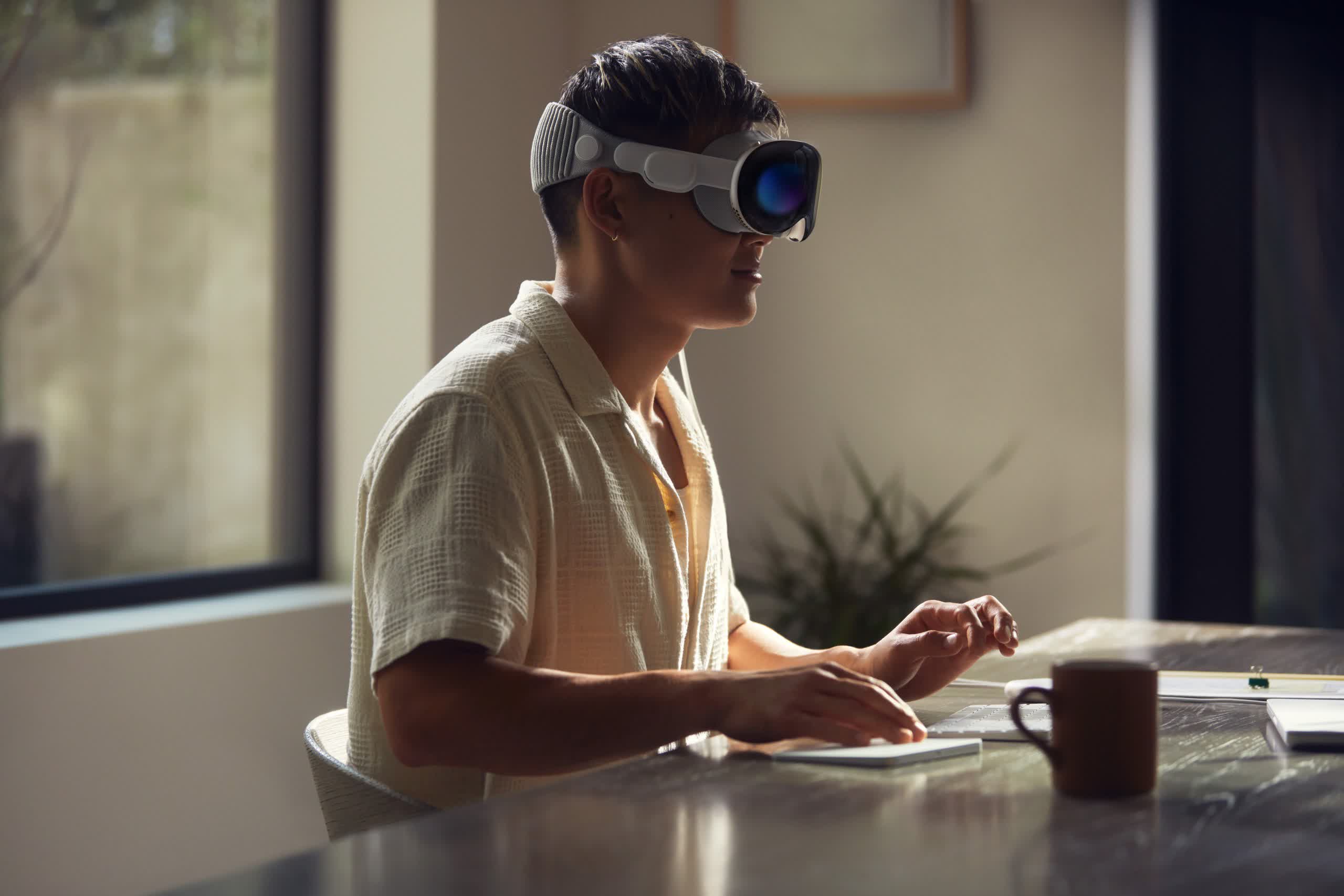[ad_1]
Through the looking glass: After years of leaks and speculation, Apple has finally unveiled its entry into the virtual reality (VR) and augmented reality (AR) market. It’s a costly venture; the Vision Pro seeks to incorporate Apple’s robust and popular software ecosystem into an AR headset with the processing power of a MacBook.
Apple capped off its WWDC23 presentation by revealing its long-anticipated augmented reality headset – the Vision Pro. For $3,499, the M2-powered standalone device introduces a new operating system and App interface within a mixed-reality space. Remarkably, it operates without physical controllers and is set to launch early next year.
The Cupertino-based tech giant views the Vision Pro as a unique product tier, aptly named Spatial Computing. The innovative visionOS offers alternate versions of apps people frequently use on their iPhone, iPad, Mac, Apple Watch, and Apple TV.

Multiple virtual screens, expandable up to 100 feet wide, enable users to multitask with entertainment and productivity apps. These include Apple TV+, Disney+, the Microsoft Office suite, Safari, FaceTime, Apple Arcade games, and many more. Notably, developers can port apps to visionOS, but the Vision Pro also includes a compatibility mode for iPhone and iPad apps.
User interaction is mainly through eye tracking, hand gestures, and voice commands. Like most headsets, the device features a virtual keyboard, but can also connect to Bluetooth keyboards or controllers for work and gaming. Moreover, Vision Pro users can seamlessly connect to a Mac by merely looking at it, which then provides an enlarged view of Mac apps within the mixed reality space.
The device’s micro-OLED lenses collectively contain 23 million pixels, effectively achieving 4K per eye, which is about double the resolution of VR headsets like the Meta Quest 2 and PlayStation VR2. This grants the Vision Pro’s virtual screens full 4K image quality.

Additionally, the headset includes Apple’s first-ever 3D camera, enabling 3D photo and video capture. It also allows users to view iPhone panorama photos in a wrap-around mode.
Despite its high price, the Vision Pro’s launch event suggested that Apple envisions the device serving both work and play purposes at home and in the office. Several features appear designed to streamline the VR and AR experiences, making them more user-friendly for the average consumer.
Beyond the controller-free interface, Apple aims to ensure that Vision Pro users don’t feel overly isolated from the surrounding environment. A physical dial can adjust the visibility of the virtual background, the headset automatically renders nearby people visible, and the user’s eyes remain perceptible to external observers.
The headset’s new R1 processor also reduces passthrough video lag by managing the input from 12 cameras, five sensors, and six microphones. An external battery offers two hours of continuous use.
[ad_2]
Source link
